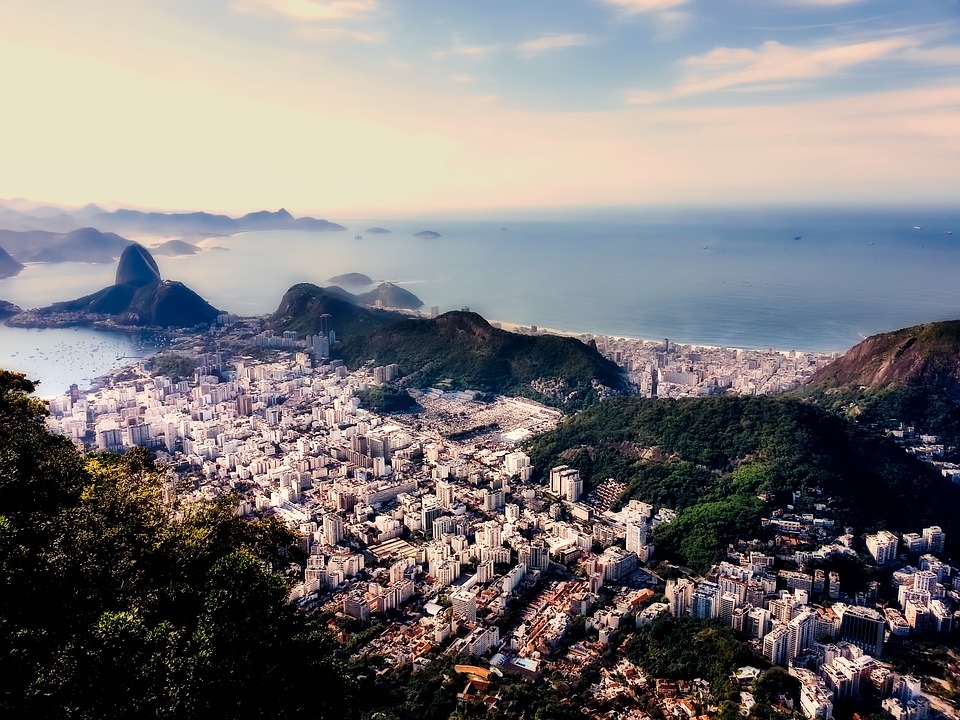
SDEWES INDEX
related metrics presents an opportunity to trigger policy learning, action, and cooperation to bring cities closer to sustainable development.

1st LA SDEWES Conference will be held at the School of Chemistry / Escola de Química - UFRJ (concorse E), Av. Athos da Silveira Ramos, 149 - Cidade Universitária, Rio de Janeiro.
Opening session and invited lecture on Monday, January 29, will be held in another venue, at Fundação Coppetec, R. Muniz de Aragão, 360 - Bloco 1 - Ilha do Fundão - Cidade Universitária, Rio de Janeiro.
Conference venue on Monday, January 29:
Fundação Coppetec (08:00 - 12:00 h, registration, opening session, coffee break and invited lecture)
Notório Sabor restaurant (12:00-13:00, lunch break)
Escola de Química, concorse E (13:00 - 17:30 h, registration, sessions and coffee break)
Conference venue on Tuesday, January 30 and Wednesday, January 31
Escola de Química, concorse E (registration and all conference activities)
Notório Sabor restaurant (12:30-14:00, lunch break)
UFRJ is the largest federal university in the country and is one of the Brazilian centers of excellence in teaching and research. In 2015 QS World University Rankings ranked UFRJ as the best Brazilian federal university, as well as the third best university in the country occupying the ninth position among institutions of Latin America. The university is located mainly in Rio de Janeiro, with ramifications spreading to other ten cities. Its main campuses are the historical campus of "Praia Vermelha" (Red Beach) and the newer "Cidade Universitária" (College City), which houses the "Parque Tecnológico do Rio" (Technology Park of Rio) - a science, technology and innovation development cluster.
RIO DE JANEIRO, BRAZIL

AREA: 1,221 km2 (486.5 sq mi)
GEOGRAPHIC LOCATION: 22°54′10″ S - 43°12′27″ W
POPULATION: 6,453,682
Founded in 1565 by the Portuguese, the city was initially the seat of the Captaincy of Rio de Janeiro, a domain of the Portuguese Empire. Later, in 1763, it became the capital of the State of Brazil, a state of the Portuguese Empire. In 1808, when the Portuguese Royal Court transferred itself from Portugal to Brazil, Rio de Janeiro became the chosen seat of the court of Queen Maria I of Portugal, who subsequently, in 1815, under the leadership of her son, the Prince Regent, and future King João VI of Portugal, raised Brazil to the dignity of a kingdom, within the United Kingdom of Portugal, Brazil, and Algarves. Rio stayed the capital of the pluricontinental Lusitanian monarchy until 1822, when the War of Brazilian Independence began. This is one of the few instances in history that the capital of a colonising country officially shifted to a city in one of its colonies. Rio de Janeiro subsequently served as the capital of the independent monarchy, the Empire of Brazil, until 1889, and then the capital of a republican Brazil until 1960 when the capital was transferred to Brasília.
Rio de Janeiro is one of the most visited cities in the Southern Hemisphere and is known for its natural settings, Carnival, samba, bossa nova, and balneario beaches such as Barra da Tijuca, Copacabana, Ipanema, and Leblon. In addition to the beaches, some of the most famous landmarks include the giant statue of Christ the Redeemer atop Corcovado mountain, named one of the New Seven Wonders of the World; Sugarloaf Mountain with its cable car; the Sambódromo (Sambadrome), a permanent grandstand-lined parade avenue which is used during Carnival; and Maracanã Stadium, one of the world's largest football stadiums.
The metropolis is anchor to the Rio de Janeiro metropolitan area, the second-most populous metropolitan area in Brazil and sixth-most populous in the Americas. Part of the city has been designated as a World Heritage Site, named "Rio de Janeiro: Carioca Landscapes between the Mountain and the Sea", by UNESCO on 1 July 2012 as a Cultural Landscape.
Brazil is the world's tenth largest energy consumer with much of its energy coming from renewable sources, particularly hydroelectricity and ethanol; the Itaipu Dam is the world's largest hydroelectric plant by energy generation. Tourism in Brazil is a growing sector and key to the economy of several regions of the country. According to the World Tourism Organization (WTO), international travel to Brazil accelerated in 2000 and revenues from international tourism continue to rise.
Currency
The Brazilian real (Portuguese: real, pl. reais; sign: R$; BRL), is the official currency of Brazil. It is subdivided into 100 centavos.
The dollar-like sign (cifrão) is the currency's symbol, and in all the other past Brazilian currencies, is officially written with two vertical strokes rather than one. However Unicode considers the difference to be only a matter of font design, and does not have a separate code for the two-stroked version. Bank notes are in denominations of 2, 5, 10, 20, 50, 100 reals, and coins in denominations of 1, 5, 10, 25 and 50 centavos and 1 real.
1 EUR ~ 3,72 BRL
Transport and Safety
Exploring a new city is always fun and exciting, but here are a few words to the wise to make sure your stay at Rio stays that way.
Firstly, on transport!
The conference shuttle bus will there to pick you up from the hotels listed on our website, under accommodation.
Rio has an underground public transport, which is as wonderful as it is small. If you get the chance do give it a try. Above the underground, Rio is connected via a grid of bus lines (usually more than one operator is available on any given line- we suggest the more expensive options, if for no other reason, than for the AC).
Last but not least, the taxi network is a good way of getting from point A to point B.
Secondly, on Security!
Rio has a few rules that every seasoned visitor will tell you;
Enjoy your time, take a moment to experience the city, see the sights, talk to the locals!










